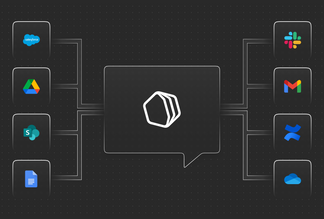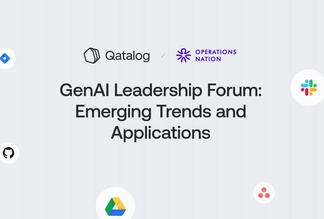
Remote work blind spots need to be addressed before a shift to hybrid
We’re about to embark on another global work experiment.
As we come off a shift to remote work that for many businesses was involuntary and took months to stabilize, one would expect that these new dimensions — and challenges — of how we collaborate would shape our next steps.
Workforces are moving toward hybrid models with staff divided between in-office and remote work. Similar to the shift to remote, this is new territory. But it will be far less sudden, likely taking years to play out as work teams search for their equilibrium.
There will be a learning curve that comes with hybrid. Even companies that nailed the shift to remote will be kept on their toes in the switch to hybrid, which presents entirely new demands. Those that apply learnings from their new remote set ups stand the best chance to stay ahead.
The clearest warning signs that challenges lie ahead for hybrid workers come from GitLab’s 2021 Remote Work Report. It exposes generational divides in the workplace — specifically divides between the perception and reality of how well remote work is going. This in turn opens questions on employee burnout and blind spots, with critical lessons for people leaders.
Younger generations feel more of the remote work pain
Today’s digital work experience brings dependencies on quality asynchronous communication — with significant benefits for those who take time to simply write things down. But remote work can also bring stress and anxiety for knowledge workers who bear the brunt of disorganization within their companies.
The culprits? Manual process documents, tool silos, inefficient ways of sharing basic status updates, and making work only about work. While these factors may seem obvious to high-performing teams, leaders risk missing these signals if they feel remote work pains less than their younger counterparts.
According to the GitLab report, 63% of 21-38 year-olds say they have to update process documents manually, compared to just 45% of those over 55.
When it comes to challenges around visibility and accessing basic information, more young staff report silos created by different teams using different tools (66% vs. 55%). They also report in higher percentages the need to ping colleagues for information or status updates (74% vs. 61%).
In the battle against feelings of isolation, almost half (46%) of young employees say they feel more connected at work through social activities, compared to just 33% of older employees.
All these findings make it obvious why young workers yearn for a greater sense of meaning in their day-to-day lives. And perhaps further evidence of young workers’ desires to level-up the employee experience: they list a top benefit of working in a remote environment as “hiring the best and brightest,” whereas older employees list “less politics and bureaucracy.”
What are the consequences of these generational divides?
As we see higher proportions of young employees reporting manual processes, fragmented information, and a lack of belonging at work, it’s no wonder we keep hearing about burnout culture. The proliferation of collaboration and productivity tools has created a pressure cooker, and the constant alerts, pings, and notifications suggest it’s time for a new way of work.
Employers should take note, because team members are twice as likely to seek employment elsewhere if they aren’t satisfied with workplace applications, according to Gartner. Although these challenges surface across geographies and industries, leaders may think their companies are immune to high turnover. But even the most reputable companies risk an exodus as part of the “YOLO” economy, where burned-out workers who have managed to build up some savings are quitting stable jobs in search of post-pandemic adventure and a higher quality of life.
And if the human pains of remote work aren’t felt evenly across a company, the financial consequences may quickly draw attention from employers. The average cost to replace a mid-range position is $8,000, while the average cost of a disengaged employee is $16,000.
Leadership blind spots have emerged from over-optimism
While many companies navigate their second major work model shift in just two years, team leaders need to recognize blind spots from the previous pivot. The GitLab report survey data includes a variety of examples of how leaders may have dangerous degrees of over-optimism as they head toward hybrid work.
Of the c-suite and executive-level employees surveyed, 88% say they have a good view into teams and projects in the organization. Yet, almost half (49%) say that a lack of visibility creates silos or blocks collaboration. Additionally, 80% of these executives say they often ping colleagues for information or status updates, suggesting that if they feel they have good visibility, it has to be manually achieved, as opposed to coming from written visibility via asynchronous communication.
Moreover, 88% of c-suite and executive employees say they’re satisfied with the level of productivity in their team. However, 58% agree that they “lose time searching for documents and links across tools and folders,” and 47% agree that “different processes and ways of working from one team to another” block collaboration.
These contradictions suggest that although leaders like the idea of stewarding effective teamwork, both their own admissions as well as the struggles many young employees disproportionately face mean there’s a lot more to be done to master remote work. Asynchronous work isn’t going away, so it’s clearly time to invest in processes that enable increased productivity rather than reverting to old norms.
Hybrid work could light a fuse under the hidden remote work challenges
For many companies, the shift to hybrid seems inevitable — and similar to the shift to remote, they assume everyone will “figure it out” at the same time. But switching to hybrid will be hard. Process disintegration, office cliques, a reversion to presenteeism, and uncoordinated timetables are just some of the trials newly hybrid companies could face. Employees want to know what to expect, and want to know there’s a plan.
Before leaders knee-jerk their way toward hybrid, they need an honest remote work report card. Beyond surviving the shift to remote, they should recognize the benchmarks for what successful remote work really looks like. Leaders will recruit and retain top talent if they foster a culture where things are written down (public and editable), where repeated tasks have clear workflows, where asynchronous communication is valued, and where output is more important than hours put in. These modern work lessons will pay dividends no matter where a team operates — remote, in the office, or anywhere in between.




